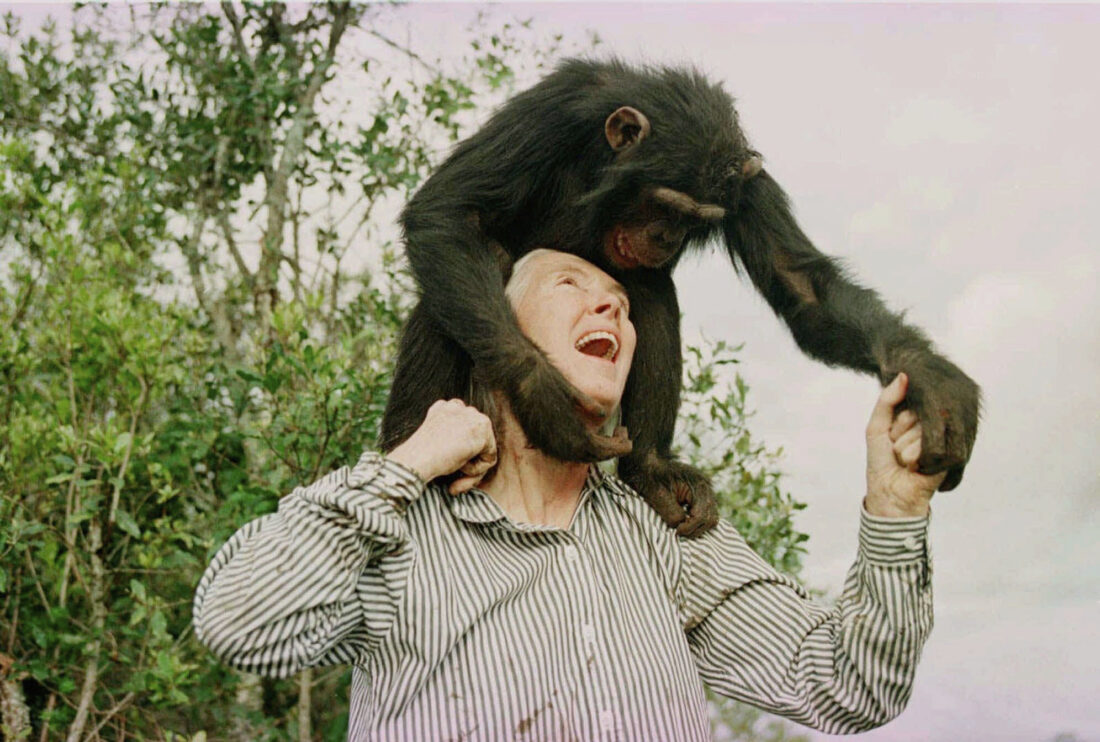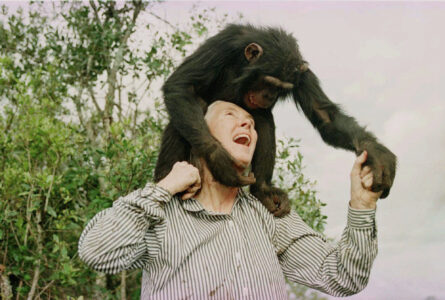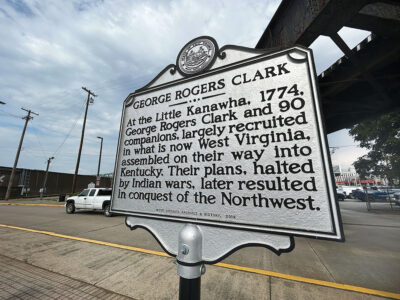Editor’s Notes: Continuing Goodall’s work

FILE - Jane Goodall plays with Bahati, a 3-year-old female chimpanzee, at the Sweetwaters Chimpanzee Sanctuary near Nanyuki, north of Nairobi, on Dec. 6, 1997. (AP Photo/Jean-Marc Bouju, File)
I’ve reached the age where news of a celebrity death is more likely to make me feel a twinge of “oh, that’s a shame” than it did when I was younger. Now the names mean something to me, often reminding me of a favorite movie or song from what feels like lifetimes ago.
But this week I was hit a little harder when I saw the news of Jane Goodall’s death Wednesday.
To be frank, the first shock was that she was 91 when she passed. She would have been about 55 or 56 when I first became aware of her work, and it was a little uncomfortable to realize how much time has passed.
But much worse was the realization that her voice would no longer be part of the discourse on our responsibility as humans to the planet and the other creatures on it — some of which are much more like us than some like to think about.
I learned about Goodall accidentally. I was working on a social studies fair project about Dian Fossey and her study of mountain gorillas. One of my fondest memories from that era is me and my dad trying to make a volcano out of chicken wire in the basement.
But while I was heck-bent on saving the mountain gorillas, my dad said “You know she wasn’t the only one, right?” He was referring to the three women paleoanthropologist and archeologist Louis Leakey recruited in the 1950s and 60s to study primates: first Goodall (chimpanzees), then Fossey and finally Birute Galdikas (orangutans).
Leakey died in 1972 (also on Oct. 1), Fossey was murdered in Rwanda in 1985. Only Galdikas continues the work.
That work fascinated me — still does, really. Sure, I can look at data that shows me chimpanzees and bonobos share 98.7% of their DNA with humans and nod like I know what that means. But reading about discoveries made by Goodall and her team at the Gombe Stream Chimpanzee Reserve made the point.
Stephen Jay Gould said her work “represents one of the Western world’s great scientific achievements.”
To me, and, I think Goodall, too, what she learned made her feel that if humans are going to behave as though we’re something special on this planet, we’d better earn that position by taking care of it.
“Surely we do not want to live in a world without the great apes, our closest living relatives in the animal kingdom?” she said, as she was supporting the Endangered Species Act. “A world where we can no longer marvel at the magnificent flight of bald eagles or hear the howl of wolves under the moon? A world not enhanced by the sight of a grizzly bear and her cubs hunting for berries in the wilderness? What would our grandchildren think if these magical images were only to be found in books?”
She talked about peace, taking care of one another, protecting animals and their habitat, slowing climate change, compassion and living in harmony with each other and the Earth. Her quiet composure and determination in spreading that message was inspiring.
“Only if we understand, can we care. Only if we care, we will help. Only if we help, we shall be saved,” she said.
I don’t know if we’ve gone wrong at understanding, caring or being willing to help, but we’re so far off that track it seems we might never get back to it. And Goodall is no longer here to keep us trying.
Fortunately, she inspired generations of young people — plenty of them women — who are studying and willing to speak out in her absence.
“Since young girls began reading about my early life and my career with the chimps, many, many, many of them have told me that they went into conservation or animal behavior because of me,” Goodall said. “I sincerely hope that it will help to create more interest and fascination in the natural world.”
It did. Hers was only one voice, but she made herself heard loud and clear. Now that Goodall is gone, the rest of us must remember: It’s our turn.
Christina Myer is executive editor of The Parkersburg News and Sentinel. She can be reached via e-mail at cmyer@newsandsentinel.com.






